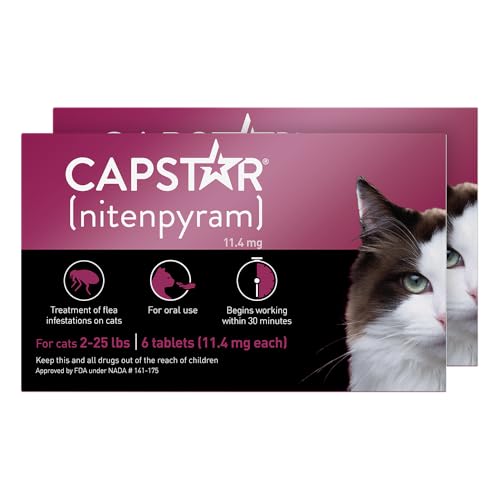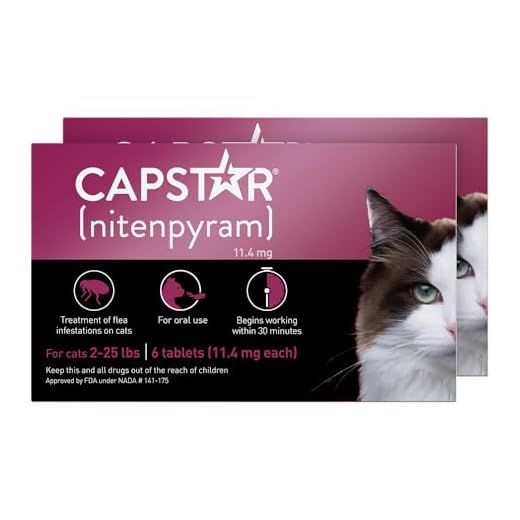It’s best to wait at least 24 hours before showing affection to me following any anti-parasitic application. This allows the product to fully absorb into my skin and coat, ensuring optimal effectiveness against those unwanted guests.
During this period, I might be a bit restless or extra playful, but it’s crucial to let the treatment do its job without interference. By giving me some space, you help ensure that I remain comfortable and safe.
Always check the specific guidelines provided with the product used, as some formulations may have different recommendations. If there’s any doubt, consulting with a vet is a great way to confirm the right timing for cuddles!
Timing for Interaction Post Treatment
Wait at least 24 hours before showing affection to ensure safety. This allows the application to settle properly and reduces the risk of transferring any residues onto your hands.
For spot-on applications, it’s advisable to avoid contact with the treated area for 48 hours. This timeframe ensures that the active ingredients are absorbed effectively into my skin.
In case of oral solutions, immediate physical interaction is generally safe, but keeping an eye on me for any unusual reactions is wise during the first few hours.
Always consult your veterinarian for specific guidelines tailored to the product used, as some may have unique requirements.
Monitoring my behavior is also essential. If I seem unusually restless or agitated, waiting an additional day before handling me may be beneficial.
Understanding Treatment Types and Their Effects
Topical solutions typically require a waiting period of 24 to 48 hours before engaging in close contact. These are applied directly on the skin and spread through the cat’s body. The chemicals can linger, so it’s wise to avoid cuddling until the product has fully absorbed.
Oral medications often allow for immediate interaction, as they are absorbed into the bloodstream and do not remain on the fur. However, following the vet’s advice is key to ensure safety and effectiveness.
Collars usually provide ongoing protection for several months, but it’s best practice to wait a few days before handling your feline friend closely. This ensures that any residual chemicals don’t transfer during playtime.
Injections can vary; most don’t require any waiting time. The medication enters the system directly, but always consult the veterinarian regarding specific guidelines for your situation.
Understanding these different methods helps in planning safe interactions with me and ensures that I remain comfortable and healthy. Always remember to check with a vet for tailored advice based on the specific product used.
Recommended Waiting Periods for Different Treatments
The timing for interaction varies by the method used. For topical solutions, a pause of at least 24 hours is advisable to allow proper absorption. In cases of oral medications, it’s generally safe to engage with me after two hours, as the active ingredients circulate quickly in the bloodstream.
If a collar is the chosen option, waiting for a full 48 hours ensures that the active components have settled securely, minimizing the risk of transfer to human hands. For sprays, a brief interval of four hours is typically sufficient for the product to dry and become less potent to touch.
In instances of combination therapies, such as a topical paired with an oral solution, the most extended waiting period should be observed–24 hours after the topical application, which allows for the safest interaction. Always check the specific product instructions for any variations.
Signs That It’s Safe to Pet Your Cat Post-Treatment
Wait for at least 24 hours before showing affection after applying any topical solution. This allows the product to absorb fully. If your human notices that I’m not scratching or licking the area where the solution was applied, it’s a good indication that it’s safe to touch me.
Behavioral Cues
Look for signs of normal behavior. If I’m acting like my usual self–playing, eating, and purring–then it’s likely okay to give me some love. On the other hand, if I seem lethargic or irritable, wait a bit longer.
Physical Signs
Check for any residue on my fur. If there’s no visible product left and my coat looks clean, it’s another sign that I’m ready for cuddles. Also, if my skin looks healthy without any redness or irritation, you can feel more confident about giving me some pets.
For those considering options for their furry friends, flea pills for cats offer an alternative that might be worth exploring.
Potential Risks of Petting Before the Waiting Period Ends
Touching me too soon after a pest elimination process can lead to several issues. Here are the main concerns:
- Skin Irritation: Residual chemicals may remain on my fur. If you stroke me before the recommended time, you risk skin irritation or allergic reactions.
- Contamination: If the product hasn’t dried completely, your hands could get contaminated. This may lead to unintended transmission of chemicals to other surfaces or pets.
- Effectiveness Reduction: Early contact might disrupt the treatment’s effectiveness. The active ingredients need time to work effectively on me, and premature handling can compromise this.
- Health Risks: Some treatments can be harmful if ingested. If you pet me and then touch your face or food, it could pose health risks.
Always prioritize safety and follow guidelines for handling me post-application. Keeping your hands clean is crucial, as you might be curious about topics like can you microwave sponges with scrubbers, but it’s essential to avoid any contamination from chemicals on my fur.
Best Practices for Handling Your Feline Friend Post-Treatment
Wait for at least 24 hours before interacting closely with me. This allows any residue from the application to settle and minimizes the chance of transferring products to your skin or other surfaces.
Safe Interaction Guidelines
Use a gentle approach. When you do engage, keep your movements slow and calm. This helps create a comfortable environment for both of us. Avoid any vigorous play or rough handling during the initial period.
Monitor my behavior. If I seem restless or agitated, give me some space. My comfort is a priority, and it’s essential to respect my boundaries during this time.
Cleaning and Hygiene Practices
Wash your hands thoroughly before and after any interaction. This ensures that any potential residues are removed and helps protect both of us from any unwanted reactions.
| Action | Recommendation |
|---|---|
| Close Contact | Wait 24 hours |
| Handling | Gentle and calm |
| Monitoring Behavior | Observe for signs of discomfort |
| Hand Hygiene | Wash hands before and after |
Following these practices ensures a safe and comfortable recovery period for me, allowing our bond to strengthen without unnecessary risks. Your attention to detail makes a significant difference in my well-being!
When to Consult a Veterinarian Regarding Flea Treatment
If signs of discomfort or adverse reactions appear, reach out to your vet immediately. Symptoms such as excessive scratching, redness, or swelling at the application site warrant professional advice. Additionally, if your human notices unusual behaviors like lethargy or appetite changes, it’s time to get expert help.
Specific Situations Requiring a Vet Visit
When using topical solutions, if your human applies more than the recommended dose, consulting a veterinarian is crucial. In cases where the product is ingested or your fur gets wet before the drying period, immediate veterinary assessment is necessary. If your skin shows signs of irritation or infection, prompt action is essential.
Ongoing Monitoring
Keep an eye on your health post-application. If conditions don’t improve within a few days, or if new symptoms develop, don’t hesitate to seek veterinary advice. Regular check-ins with a vet ensure any issues are addressed promptly, keeping me happy and healthy.









